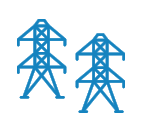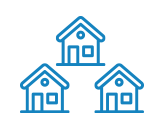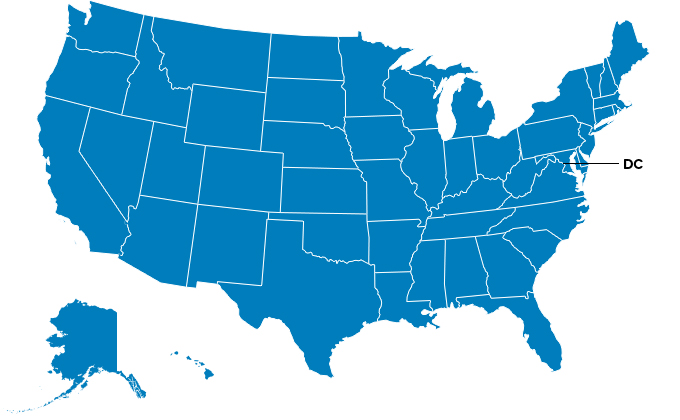Texas-New Mexico Power
October 11, 2024
The site navigation utilizes arrow, enter, escape, and space bar key commands. Left and right arrows move across top level links and expand / close menus in sub levels. Up and Down arrows will open main level menus and toggle through sub tier links. Enter and space open menus and escape closes them as well. Tab will move on to the next part of the site rather than go through menu items.
October 14, 2024
3 p.m. EDT
The electric power industry remains focused on the rebuild and recovery efforts following Hurricane Helene, which left nearly 6 million customers* in 10 states without power. Crews continue to work day and night to rebuild energy infrastructure and to restore power to those who are able to receive it in the areas of Georgia and the Carolinas hardest hit by the storm.
As of 3 p.m. EDT, power has been restored to approximately 5.94 million customers—or 99.40 percent of those impacted by Hurricane Helene.
We are grateful for the patience and support of our customers and for all of the workers and industry suppliers involved in the Helene response, one of the largest and most complex industry restoration efforts in U.S. history.
*It is important to remember that outages measure customer meters impacted, not the number of individuals without power. Due to the nature of the storm, customers may have experienced more than one outage.
Every electric company has a detailed plan for restoring power after storms. Typically, one of the first steps is to make sure that power is no longer flowing through downed lines. Restoration then proceeds based on established priorities. Below are the steps to restore power after a storm. Learn More.












October 11, 2024
October 11, 2024
October 10, 2024
October 10, 2024
October 10, 2024
October 09, 2024
October 09, 2024
October 09, 2024
October 09, 2024
October 09, 2024
October 07, 2024
October 07, 2024
October 07, 2024
October 07, 2024
October 07, 2024
October 07, 2024
October 07, 2024
October 04, 2024
October 04, 2024
October 04, 2024
October 04, 2024
October 04, 2024
October 04, 2024
October 04, 2024
October 04, 2024
October 04, 2024
October 04, 2024
October 04, 2024
October 04, 2024
October 04, 2024
October 04, 2024
October 04, 2024
October 04, 2024
October 04, 2024
October 03, 2024
October 03, 2024
October 03, 2024
October 03, 2024
October 03, 2024
October 03, 2024
October 03, 2024
October 03, 2024
October 03, 2024
October 03, 2024
October 03, 2024
October 03, 2024
October 03, 2024
October 03, 2024
October 03, 2024
October 02, 2024
October 02, 2024
October 02, 2024
October 02, 2024
October 02, 2024
October 02, 2024
October 02, 2024
October 02, 2024
October 02, 2024
October 02, 2024
October 02, 2024
October 02, 2024
October 02, 2024
October 02, 2024
October 02, 2024
October 02, 2024
October 02, 2024
October 02, 2024
October 02, 2024
October 01, 2024
October 01, 2024
October 01, 2024
October 01, 2024
October 01, 2024
October 01, 2024
October 01, 2024
October 01, 2024
October 01, 2024
October 01, 2024
October 01, 2024
October 01, 2024
October 01, 2024
October 01, 2024
October 01, 2024
October 01, 2024
October 01, 2024
October 01, 2024
October 01, 2024
October 01, 2024
October 01, 2024
October 01, 2024
October 01, 2024
October 01, 2024
October 01, 2024
October 01, 2024
October 01, 2024
October 01, 2024
October 01, 2024
October 01, 2024
September 30, 2024
September 30, 2024
September 30, 2024
September 30, 2024
September 30, 2024
September 30, 2024
September 30, 2024
September 30, 2024
September 30, 2024
September 30, 2024
September 30, 2024
September 30, 2024
September 30, 2024
September 30, 2024
September 30, 2024
September 30, 2024
September 30, 2024
September 30, 2024
September 30, 2024
September 30, 2024
September 30, 2024
September 30, 2024
September 30, 2024
September 30, 2024
September 30, 2024
September 30, 2024
September 30, 2024
September 30, 2024
September 30, 2024
September 30, 2024
September 30, 2024
September 30, 2024
September 30, 2024
September 30, 2024
September 30, 2024
September 30, 2024
September 30, 2024
September 30, 2024
September 30, 2024
September 30, 2024
September 30, 2024
September 30, 2024
September 30, 2024
September 30, 2024
September 30, 2024
September 30, 2024
September 30, 2024
September 30, 2024
September 30, 2024
September 30, 2024
September 29, 2024
September 29, 2024
September 29, 2024
September 29, 2024
September 29, 2024
September 29, 2024
September 29, 2024
September 29, 2024
September 29, 2024
September 29, 2024
September 29, 2024
September 29, 2024
September 29, 2024
September 29, 2024
September 29, 2024
September 29, 2024
September 29, 2024
September 29, 2024
September 29, 2024
September 29, 2024
September 29, 2024
September 29, 2024
September 29, 2024
September 29, 2024
September 29, 2024
September 29, 2024
September 29, 2024
September 29, 2024
September 29, 2024
September 29, 2024
September 29, 2024
September 29, 2024
September 29, 2024
September 29, 2024
September 29, 2024
September 29, 2024
September 29, 2024
September 29, 2024
September 29, 2024
September 29, 2024
September 29, 2024
September 29, 2024
September 29, 2024
September 29, 2024
September 29, 2024
September 29, 2024
September 29, 2024
September 29, 2024
September 28, 2024
September 28, 2024
September 28, 2024
September 28, 2024
September 28, 2024
September 28, 2024
September 28, 2024
September 28, 2024
September 28, 2024
September 28, 2024
September 28, 2024
September 28, 2024
September 28, 2024
September 28, 2024
September 28, 2024
September 28, 2024
September 28, 2024
September 28, 2024
September 28, 2024
September 28, 2024
September 28, 2024
September 28, 2024
September 28, 2024
September 27, 2024
September 27, 2024
September 27, 2024
September 27, 2024
September 27, 2024
September 27, 2024
September 27, 2024
September 27, 2024
September 27, 2024
September 27, 2024
September 27, 2024
September 27, 2024
September 27, 2024
September 27, 2024
September 27, 2024
September 27, 2024
September 27, 2024
September 27, 2024
September 27, 2024
September 27, 2024
September 27, 2024
September 27, 2024
September 27, 2024
September 27, 2024
September 27, 2024
September 27, 2024
September 27, 2024
September 27, 2024
September 27, 2024
September 27, 2024
September 27, 2024
September 27, 2024
September 27, 2024
September 27, 2024
September 27, 2024
September 27, 2024
September 27, 2024
September 27, 2024
September 27, 2024
September 27, 2024
September 27, 2024
September 27, 2024
September 27, 2024
September 26, 2024
September 26, 2024
September 26, 2024
September 26, 2024
September 26, 2024
September 26, 2024
September 26, 2024
September 26, 2024
September 26, 2024
September 26, 2024
September 26, 2024
September 26, 2024
September 26, 2024
September 26, 2024
September 26, 2024
September 26, 2024

Additional Information
Data includes information submitted by investor-owned electric companies only. Additional information for public power utilities and electric cooperatives can be found by visiting the American Public Power Association and the National Rural Electric Cooperative Association.